By Penny Pawl, UC Master Gardener of Napa County
Three years ago, I wrote an article about creating African keyhole worm-compost bins in my garden beds. This summer it was time to harvest compost from two of the bins.
I used garbage cans with ¼-inch holes drilled in the sides and bottom so the worms can go back and forth. As they move about, they take some of the compost with them and spread it in the garden bed.
Mine are all raised beds. The bins were installed after hardware cloth was added to the bottom of each bed to foil gophers. With time, the hardware cloth will rust and need replacement.
Keyhole gardens originated in Africa when people created kitchen gardens using materials they had lying around. The design is circular with a keyhole-like entrance. A worm compost bin made out of chicken wire or other materials is placed in the center, and the gardener puts kitchen waste in the bin. When the compost is ready, it is spread over the garden.
The first garbage can I checked was half full of compost. I transferred all the uncomposted material on top to another bin. Then I prepared a mesh bag (the kind potatoes come in) full of my red wiggler worms' favorite foods, like bananas, lettuce and melon rinds. I placed this bag on top of the finished compost as a lure. Slowly the worms and sow bugs started moving from the compost into the mesh bag. These worms are expensive and I didn't want to lose any. Luring most of them into the mesh bag took about two weeks.
Why do I want the sow bugs? They also eat decomposing material and leave their droppings, which are as beneficial to plants as worm droppings are. On one online forum I follow, a worm composter was looking for sow bugs to add to his bin. I have found that they move in naturally.
I put the composted material on a screen over a tray. In the tray I put new damp bedding: newspaper, cardboard, old leaves, straw. Neither red wigglers or sow bugs like light, so they will leave the compost and move into the new bedding. Then I can sift the compost to get out any large pieces that haven't fully broken down. These big things go into the bottom of the new bin.
I move the sifted compost to a large, long tray in my hothouse to dry. If stored damp it will mold.
The biggest problem I have encountered is that tree roots also like keyhole gardens. I wasn't aware of this problem when I built the beds, and I had to cut the tree roots out. Also, my arms aren't long enough to reach the bottom of the garbage can so I eventually need help getting all the finished compost out.
Once a bin is empty, I use the layer method to build a new bin, alternating torn damp newsprint, dried leaves, rice hulls, coffee grounds and a dash of chicken manure. The worms and other critters in the bin will mix these materials, which should be as damp as a wrung-out sponge. Usually, I top off the layers with banana peels or old lettuce. On top of all that, I place a piece of black plastic and put the lid on the can.
Once I see that the worms are settled and eating the items in the can, I start feeding them my kitchen garbage. Three garbage bins have yielded 15 gallons of worm gold, as we gardeners call it. I will spread it around my yard to feed all my plants this fall.
If you would like to learn more about composting, take a look at “Backyard Composting,” a video that several Master Gardeners and I produced in partnership with Napa County Library. You can find it on YouTube.
Food Growing Forum: Napa CountyMaster Gardeners will present a discussion of “Cane Berries” on Sunday, November 14, from 3 p.m. to 4 p.m., via Zoom. Register here to receive the Zoom link.
Got Garden Questions? Contact our Help Desk. The team is working remotely so please submit your questions through our diagnosis form, sending any photos to mastergardeners@countyofnapa.org or leave a detailed message at 707- 253-4143. A Master Gardener will get back to you by phone or email. For more information visit http://napamg.ucanr.edu or find us on Facebook or Instagram, UC Master Gardeners of Napa County.
.
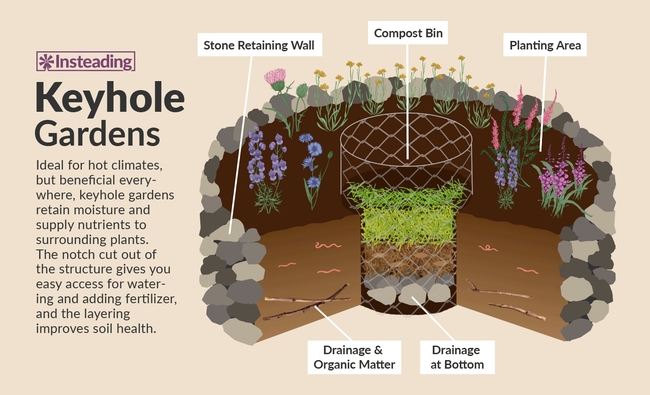
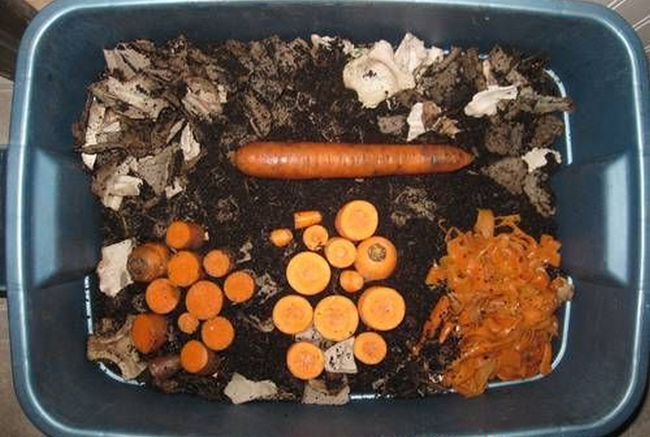
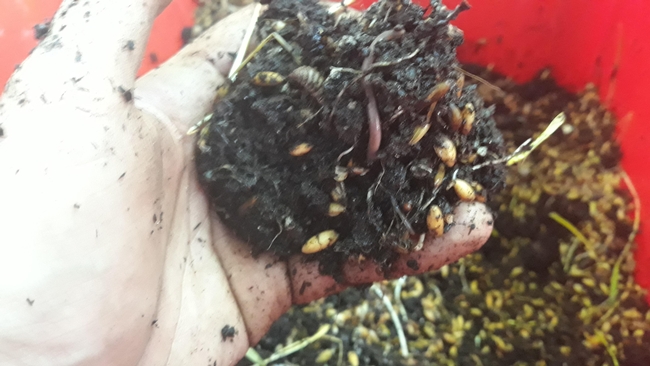
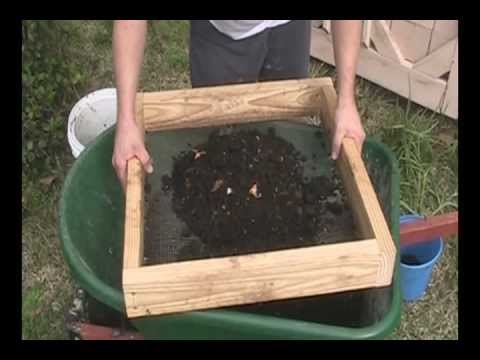
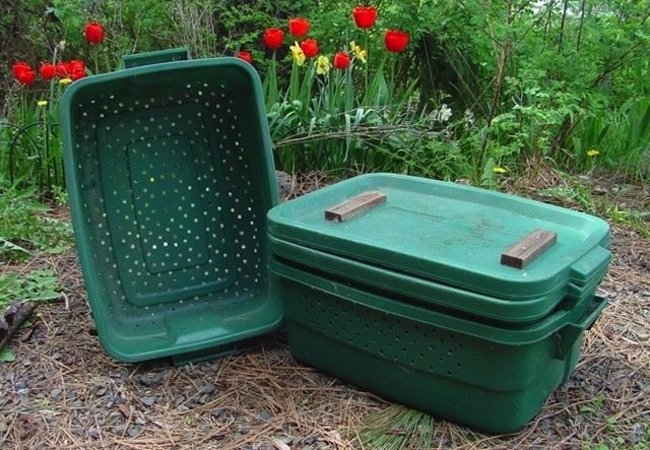
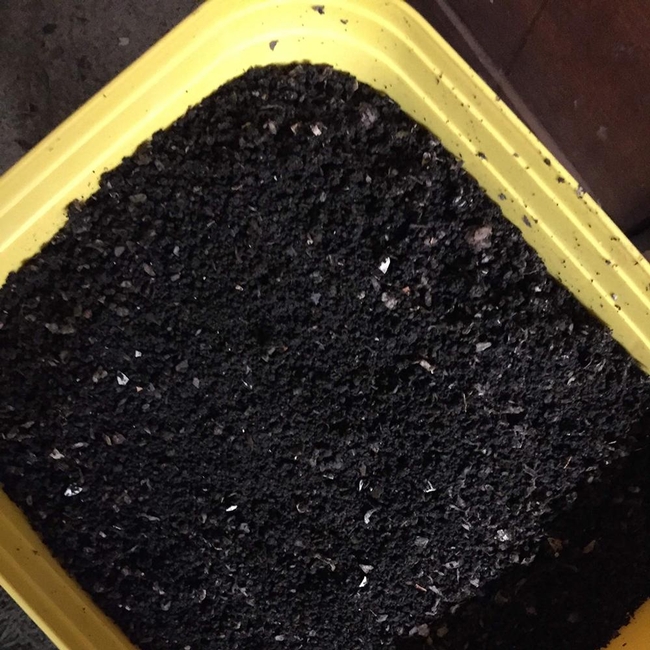
By Penny Pawl, U.C. Master Gardener of Napa County
Some time ago I wrote a column about African keyhole gardens. These innovative gardens are circular and have a place in the middle for worm composting bin. The design has performed so well that you can now buy a wooden kit for such a garden.
Last winter, I had an invasion of gophers who were eating my produce before I could. All my raised beds needed to be emptied and new wire put in the bottom.
I had been thinking about adopting the keyhole garden method of composting. Here was the opportunity to put my plan into effect.
My helper and I cut the bottoms off of two garbage cans so the worms could move back and forth. Then we drilled holes all along the sides. These garbage cans were placed in the bottom of the beds right on top of the gopher wire. Then we surrounded them with soil, keeping the rims of the cans above the soil, and put the lids on.
Next I had to supply the bedding for the precious red wiggler worms I planned to add to the cans. Red wigglers are used in composting because they are the only worms that eat decomposing materials such as kitchen scraps, coffee grounds and plant waste. Any seeds that end up in the compost—such as seeds from watermelons or tomatoes—may reseed in the bin or when you spread the compost around, so be careful what you put in the bins. I once had a compost bin full of maple seedlings because I had added maple leaves.
The idea behind this type of composting is that the worms will move in and out of the cans and, as they do, will take some of the compost with them. By this method, the compost gets spread around and helps the plants thrive. Worm compost is a balanced fertilizer and helps improve the texture of your soil.
I fill the bins with plain cardboard, which the worms love, as well as newspaper, kitchen scraps and soft trimmings from plants. On top of the bedding, I put large black plastic bags to keep the bedding moist. Something good is happening in there.
I have noticed that these cans seem to dry out faster than my regular compost bins. Maybe moisture leaches out of the bins into the soil. I check the bins often and water once a week with a garden hose. I also noticed that these bins were warmer in winter than my free-standing bins, which is good for the composting process. The soil around the bin must be keeping it warmer.
Online I found red wigglers from Africa. They are bigger and longer and eat more. I put them in one bin only so I could check on how they do.
I don't know if I will need to clean these bins out like I do with the free-standing ones. In spring, I plan to take out all of the uncomposted material and see what the bottom of the bin looks like. That's where the compost it.
Since I created these bins, they have attracted other creatures such as snails and slugs. And greeting me when I check the bins are some small toads that catch all the fruit flies. One bin has six tiny toads in it. I have also seen two alligator lizards and a black racer snake.
Workshop: U. C. Master Gardeners of Napa County will hold a workshop on “Garden Basics IV – Landscape Thoughts” November 3. There will be a discussion of firewise and hillside landscaping; rain gardens and swales; different mulches and permeable hardscapes as well as possible solutions to problem landscaping areas.Online registration (credit card only); Mail-in/Walk-in registration (check only or drop off cash payment).
Master Gardeners are volunteers who help the University of California reach the gardening public with home gardening information. U. C. Master Gardeners of Napa County ( http://ucanr.edu/ucmgnapa/) are available to answer gardening questions in person or by phone, Monday, Wednesday and Friday, 9 a.m. to Noon, at the U. C. Cooperative Extension office, 1710 Soscol Avenue, Suite 4, Napa, 707-253-4143, or from outside City of Napa toll-free at 877-279-3065. Or e-mail your garden questions by following the guidelines on our web site. Click on Napa, then on Have Garden Questions? Find us on Facebook under UC Master Gardeners of Napa County.
By Penny Pawl, U. C. Master Gardener of Napa County
I just built an African keyhole garden and I'll bet you are wondering what that is. The African keyhole garden was designed by CARE in Zimbabwe during the mid 1990s to encourage people to grow their own food. The design relied on materials that were close at hand—such as bricks, stones, branches, hay, ashes, manure and soil—to create an easy-care garden for disabled people.
The plan became so popular that many Africans began growing kitchen gardens. A so-called keyhole garden bed has a dead end opposite the opening. At the dead end is a compost bin. More than 20,000 of these have been built in Africa.
The Texas Master Gardener Association has held a number of workshops to promote this type of garden. They have also standardized the plans. Their version is a six-foot-wide garden bed with a twelve-inch-wide bin made of chicken wire in the middle. The gardener fills the bin with compostable material such as moistened newsprint, cardboard, dead plants, kitchen waste and red wiggler worms, the same components of a worm bed. The concept is that the worms will gradually decompose the material and their castings will nourish the soil and plants around the bin.
For mine, I decided to use an old garbage can with holes drilled in it. The garbage-can lid keeps out pests and any creature looking for a warm nest. I created the planting bed with building blocks set three high and cemented in place.
Alas, I had a big problem with gophers, and I needed to win that battle. So this fall, when it was time to rework the soil, I put a layer of hardware cloth on the bottom. The hardware cloth helps to keep the gophers out. It won't last forever, but it will foil the varmints for a few years. Then a mixture of clean cardboard and soil was placed over the hardware cloth. Since the bed was already in a square keyhole shape, I added the garbage can and put soil around it to hold it in place.
I fill this garbage can with the same things I put in my worm compost beds, including red wiggler worms. I have been watering it and feeding it for a few weeks to try to get it working. Eventually, the liquid and castings from the worms and other insects will work its way into the new bed areas and fertilize the soil from below rather than from on top.
Tall garden beds that have compost bins built into them are called "banana circles" by permaculture specialists. I plan to incorporate banana circles in future garden beds.
When you plant your keyhole garden, aim for variety of plants in small groups as opposed to a single crop. Some vegetables do not do well in this type of situation, such as tomatoes, potatoes, peppers, eggplant, corn and squash.
I like the concept of the keyhole garden so much—relying on a compost bin in the middle to feed the plants around it—that I plan to try it in beds without the keyhole and see what happens. These beds will need to be cleaned out and refilled every four to five years.
Keyhole gardening techniques are often used in permaculture design. For more information, consult the North Carolina State University Extension site (https://content.ces.ncsu.edu/extension-gardener-handbook/appendix-d-permaculture-design) or the Nifty Homestead site (https://www.niftyhomestead.com/blog/keyhole-garden/). You will also find more advice and books on the topic online.
Master Gardeners are volunteers who help the University of California reach the gardening public with home gardening information. U. C. Master Gardeners of Napa County ( http://ucanr.edu/ucmgnapa/) are available to answer gardening questions in person or by phone, Monday, Wednesday and Friday, 9 a.m. to Noon, at the U. C. Cooperative Extension office, 1710 Soscol Avenue, Suite 4, Napa, 707-253-4143, or from outside City of Napa toll-free at 877-279-3065. Or e-mail your garden questions by following the guidelines on our web site. Click on Napa, then on Have Garden Questions? Find us on Facebook under UC Master Gardeners of Napa County.

